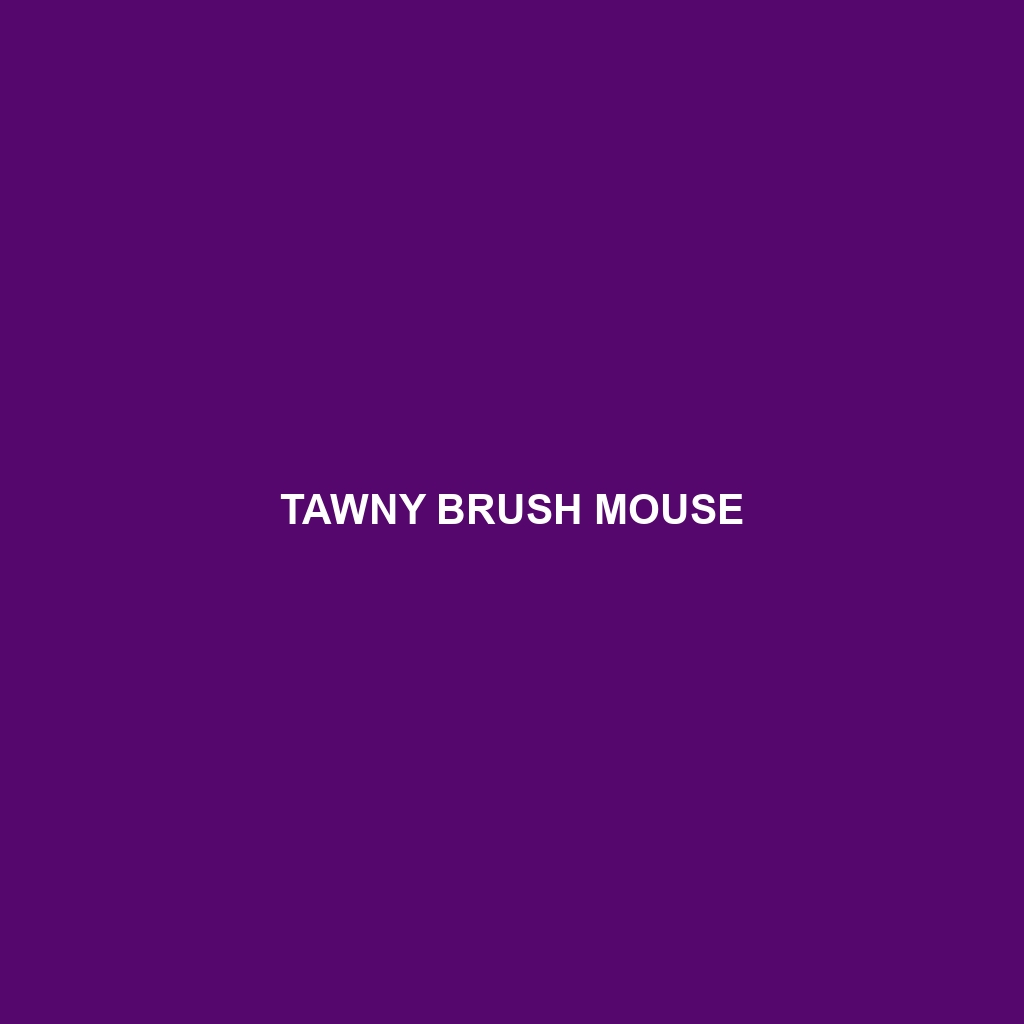Common Name: Tawny Brush Mouse
Scientific Name: Lesueuria hyperleuca
Habitat:
The Tawny Brush Mouse is primarily found in the wooded and shrubland areas of southeastern Australia, particularly in regions such as Victoria and New South Wales. This species prefers habitats with dense undergrowth, which offers both food and shelter from predators. The presence of grassy plains and heathlands is crucial for their survival, as these environments provide an ideal foraging ground.
Physical Characteristics:
The Tawny Brush Mouse is a small rodent, measuring about 8 to 10 centimeters in body length, with an additional tail length that can reach up to 11 centimeters. Its fur is a distinctive tawny brown color, providing excellent camouflage within its natural habitat. The species is characterized by its large, round ears and a slender body shape, making it agile and adept at navigating through dense vegetation. Notable features include its whiskers, which are long and sensitive, aiding its navigation in the dark and crowded environments.
Behavior:
The Tawny Brush Mouse is primarily nocturnal, exhibiting increased activity during the night when it forages for food. It is known for its agile climbing abilities, which allow it to escape predators and access food sources in the trees. This species is also a skilled burrower, creating nests underground to shelter from harsh weather conditions. Socially, Tawny Brush Mice are somewhat solitary but can be observed in small groups, especially during mating season.
Diet:
The diet of the Tawny Brush Mouse consists mainly of seeds, fruits, and various insects. They are particularly fond of the seeds from native grasses and shrubs, which provide essential nutrients. The foraging behavior includes hoarding food to prepare for seasonal changes, ensuring they have sufficient reserves during tough periods.
Reproduction:
The Tawny Brush Mouse breeds primarily between September and January, coinciding with the warmer months when food is abundant. Females typically give birth to 2 to 4 young after a gestation period of approximately 23 days. The offspring are altricial, being born blind and hairless, but they grow rapidly and are weaned within a few weeks. Parental care is mainly provided by the mother, and the young are usually mature enough to fend for themselves by the time they are 6 weeks old.
Conservation Status:
Currently, the Tawny Brush Mouse is listed as vulnerable due to habitat destruction, primarily caused by agriculture and urban development. Conservation efforts are essential to protect their habitat and ensure the continued survival of this unique species.
Interesting Facts:
The Tawny Brush Mouse has an impressive learning ability, able to navigate mazes effectively, showcasing its cognitive skills. Additionally, this species plays a crucial role in seed dispersal, contributing to the health of its ecosystem.
Role in Ecosystem:
The Tawny Brush Mouse occupies a vital role in its ecosystem as both a seed disperser and a food source for various predators, including birds of prey and snakes. By foraging and hoarding seeds, it contributes to the growth of native plants and maintains the overall biodiversity of its natural environment.
